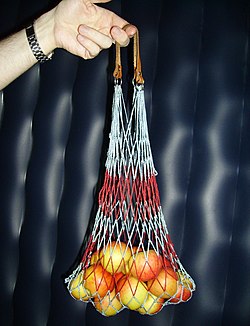The examples and perspective in this article deal primarily with Eastern Europe and do not represent a worldwide view of the subject.(March 2020) |


A string bag, net bag, or mesh bag is an open netted bag. Mesh bags are constructed from strands, yarns, or non-woven synthetic material into a net-like structure. String bags are used as reusable shopping bags [1] and as packaging for produce. [2]


